
Rabbit Anti-phospho-Ataxin 1 (Ser775)antibody
Ataxin 1 (phospho Ser776);p-Ataxin 1 (phospho S776); ATX1; ATXN1; SCA1; Ataxin 1; Ataxin-1; Ataxin1; Spinocerebellar ataxia type 1; ATX1_HUMAN.
View History [Clear]
Details
Product Name phospho-Ataxin 1 (Ser775) Chinese Name 磷酸化脊髓小脑失调症蛋白1抗体 Alias Ataxin 1 (phospho Ser776);p-Ataxin 1 (phospho S776); ATX1; ATXN1; SCA1; Ataxin 1; Ataxin-1; Ataxin1; Spinocerebellar ataxia type 1; ATX1_HUMAN. Product Type Phosphorylated anti Research Area Cell biology Neurobiology Epigenetics Immunogen Species Rabbit Clonality Polyclonal React Species Human, Mouse, Rat, (predicted: Chicken, Dog, Pig, Cow, Horse, Rabbit, Sheep, ) Applications WB=1:500-2000 ELISA=1:5000-10000 IHC-P=1:100-500 IHC-F=1:100-500 ICC=1:100-500 IF=1:100-500 (Paraffin sections need antigen repair)
not yet tested in other applications.
optimal dilutions/concentrations should be determined by the end user.Theoretical molecular weight 87kDa Cellular localization The nucleus cytoplasmic Form Liquid Concentration 1mg/ml immunogen KLH conjugated synthesised phosphopeptide derived from human Ataxin 1 around the phosphorylation site of Ser776: RW(p-S)AP Lsotype IgG Purification affinity purified by Protein A Buffer Solution 0.01M TBS(pH7.4) with 1% BSA, 0.03% Proclin300 and 50% Glycerol. Storage Shipped at 4℃. Store at -20 °C for one year. Avoid repeated freeze/thaw cycles. Attention This product as supplied is intended for research use only, not for use in human, therapeutic or diagnostic applications. PubMed PubMed Product Detail Ataxin-1, also designated spinocerebellar ataxia type 1 protein (Sca-1), is differentially expressed and localizes to both the cytoplasm and the nucleus. Mutations in Ataxin-1 are associated with the onset of the autosomal dominant neurodegenerative disorder spinocerebellar ataxia type 1 (SCA-1), which is characterized by progressive neuronal loss in the cerebellum, muscle wasting and ataxia. In Purkinje cells, where SCA-1 is predominantly observed, Ataxin-1 has been shown to directly associate with the Purkinje-enriched leucine-rich acidic nuclear protein (LANP) and the nuclear matrix-associated protein promyelocytic leukemia protein PML. In SCA-1, Ataxin-1 is mutated to encode a polyglutamine protein that forms nuclear aggregates, which interact significantly more strongly with LANP and contribute to the pathogenesis of SCA-1.
Function:
Binds RNA in vitro. May be involved in RNA metabolism. The expansion of the polyglutamine tract may alter this function.
Subunit:
Homooligomer. Interacts with CIC (By similarity). Interacts with ANP32A, PQBP1, UBQLN4, ATXN1L, USP7 and ZNF804A. Directly interacts with RBPJ; this interaction is disrupted in the presence of Notch intracellular domain. Competes with ATXN1L for RBPJ-binding.
Subcellular Location:
Cytoplasm. Nucleus. Colocalizes with USP7 in the nucleus.
Tissue Specificity:
Widely expressed throughout the body.
Post-translational modifications:
Phosphorylation at Ser-775 increases the pathogenicity of proteins with an expanded polyglutamine tract.
Sumoylation is dependent on nuclear localization and phosphorylation at Ser-775. It is reduced in the presence of an expanded polyglutamine tract.
DISEASE:
Defects in ATXN1 are the cause of spinocerebellar ataxia type 1 (SCA1) [MIM:164400]; also known as olivopontocerebellar atrophy I (OPCA I or OPCA1). Spinocerebellar ataxia is a clinically and genetically heterogeneous group of cerebellar disorders. Patients show progressive incoordination of gait and often poor coordination of hands, speech and eye movements, due to cerebellum degeneration with variable involvement of the brainstem and spinal cord. SCA1 belongs to the autosomal dominant cerebellar ataxias type I (ADCA I) which are characterized by cerebellar ataxia in combination with additional clinical features like optic atrophy, ophthalmoplegia, bulbar and extrapyramidal signs, peripheral neuropathy and dementia. SCA1 is caused by expansion of a CAG repeat in the coding region of ATXN1. Longer expansions result in earlier onset and more severe clinical manifestations of the disease.
Similarity:
Belongs to the ATXN1 family.
Contains 1 AXH domain.
SWISS:
P54253
Gene ID:
6310
Database links:Entrez Gene: 6310 Human
Entrez Gene: 20238 Mouse
Omim: 601556 Human
SwissProt: P54253 Human
SwissProt: P54254 Mouse
Unigene: 434961 Human
Unigene: 342683 Mouse
Unigene: 342686 Mouse
Unigene: 88438 Rat
Product Picture
Kidney (Mouse) Lysate at 40 ug
Primary: Anti- phospho-Ataxin 1 (Ser775) (SL12534R) at 1/1000 dilution
Secondary: IRDye800CW Goat Anti-Rabbit IgG at 1/20000 dilution
Predicted band size: 87 kD
Observed band size: 87 kD
Paraformaldehyde-fixed, paraffin embedded (rat brain); Antigen retrieval by boiling in sodium citrate buffer (pH6.0) for 15min; Block endogenous peroxidase by 3% hydrogen peroxide for 20 minutes; Blocking buffer (normal goat serum) at 37°C for 30min; Antibody incubation with (phospho-Ataxin 1 (Ser775)) Polyclonal Antibody, Unconjugated (SL12534R) at 1:200 overnight at 4°C, followed by operating according to SP Kit(Rabbit) (sp-0023) instructionsand DAB staining.Paraformaldehyde-fixed, paraffin embedded (mouse cerebellum); Antigen retrieval by boiling in sodium citrate buffer (pH6.0) for 15min; Block endogenous peroxidase by 3% hydrogen peroxide for 20 minutes; Blocking buffer (normal goat serum) at 37°C for 30min; Antibody incubation with (phospho-Ataxin 1 (Ser775)) Polyclonal Antibody, Unconjugated (SL12534R) at 1:200 overnight at 4°C, followed by operating according to SP Kit(Rabbit) (sp-0023) instructionsand DAB staining.Paraformaldehyde-fixed, paraffin embedded (mouse brain); Antigen retrieval by boiling in sodium citrate buffer (pH6.0) for 15min; Block endogenous peroxidase by 3% hydrogen peroxide for 20 minutes; Blocking buffer (normal goat serum) at 37°C for 30min; Antibody incubation with (phospho-Ataxin 1 (Ser775)) Polyclonal Antibody, Unconjugated (SL12534R) at 1:200 overnight at 4°C, followed by operating according to SP Kit(Rabbit) (sp-0023) instructionsand DAB staining.Paraformaldehyde-fixed, paraffin embedded (Human kidney); Antigen retrieval by boiling in sodium citrate buffer (pH6.0) for 15min; Block endogenous peroxidase by 3% hydrogen peroxide for 20 minutes; Blocking buffer (normal goat serum) at 37°C for 30min; Antibody incubation with (phospho-Ataxin 1 (Ser775)) Polyclonal Antibody, Unconjugated (SL12534R) at 1:200 overnight at 4°C, followed by operating according to SP Kit(Rabbit) (sp-0023) instructionsand DAB staining.Paraformaldehyde-fixed, paraffin embedded (mouse spinal cord); Antigen retrieval by boiling in sodium citrate buffer (pH6.0) for 15min; Block endogenous peroxidase by 3% hydrogen peroxide for 20 minutes; Blocking buffer (normal goat serum) at 37°C for 30min; Antibody incubation with (phospho-Ataxin 1 (Ser775)) Polyclonal Antibody, Unconjugated (SL12534R) at 1:200 overnight at 4°C, followed by operating according to SP Kit(Rabbit) (sp-0023) instructionsand DAB staining.
Bought notes(bought amounts latest0)
No one bought this product
User Comment(Total0User Comment Num)
- No comment
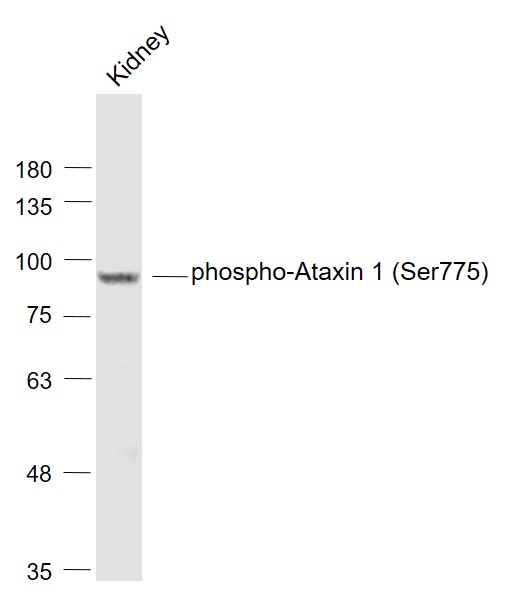
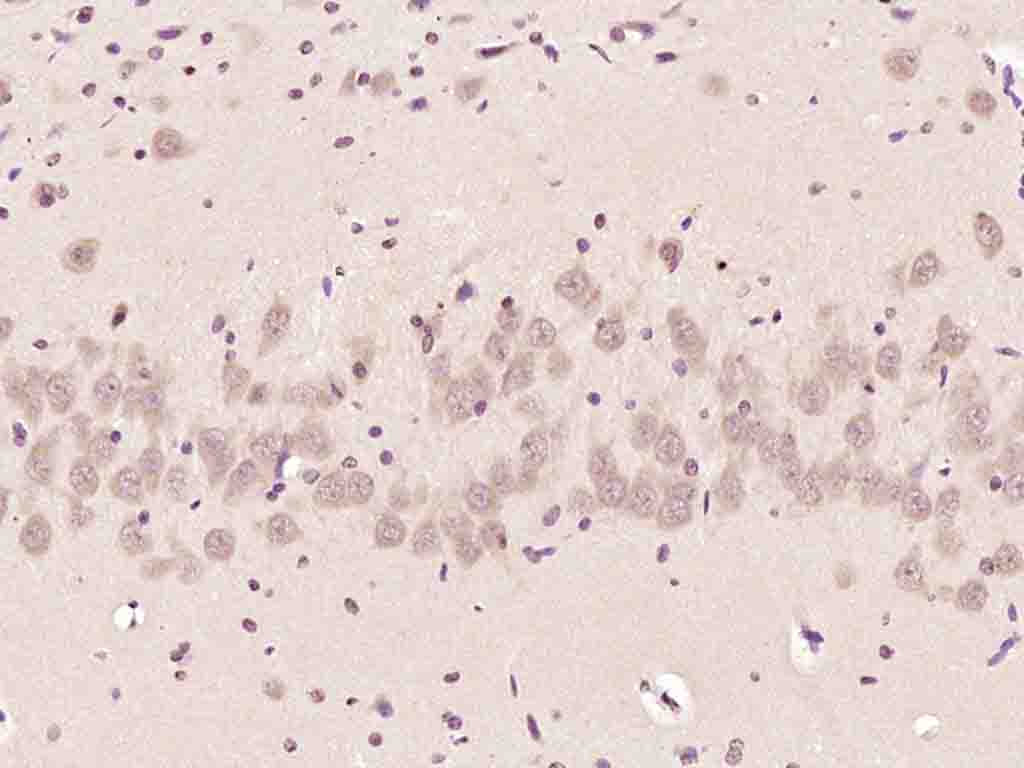
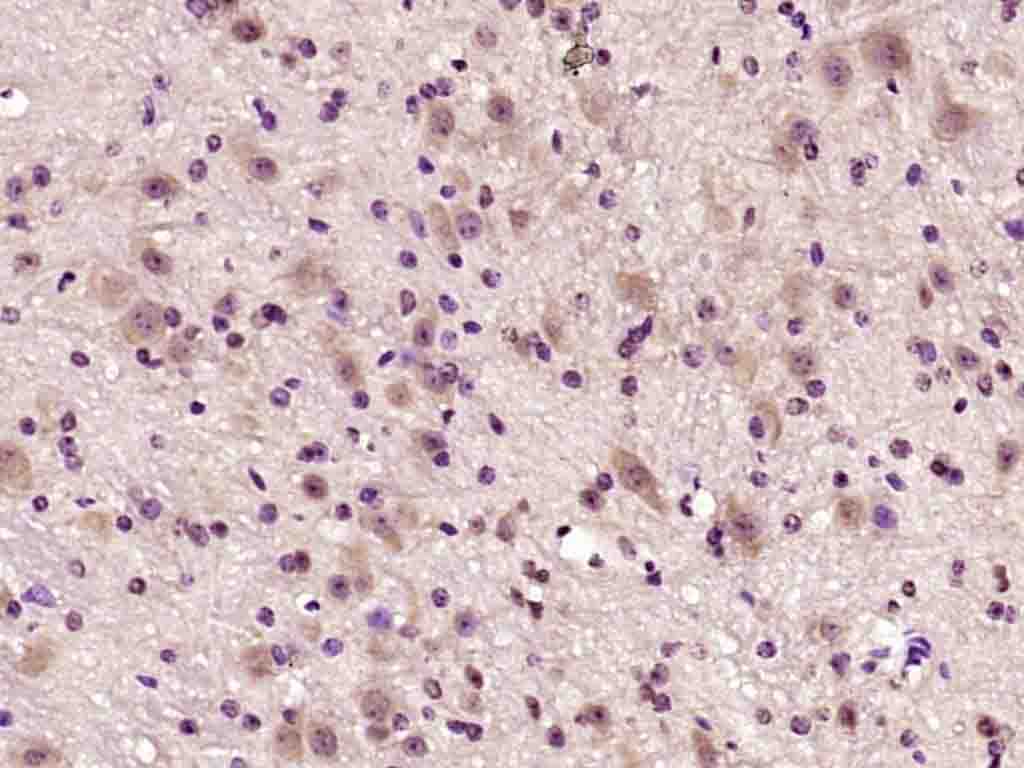
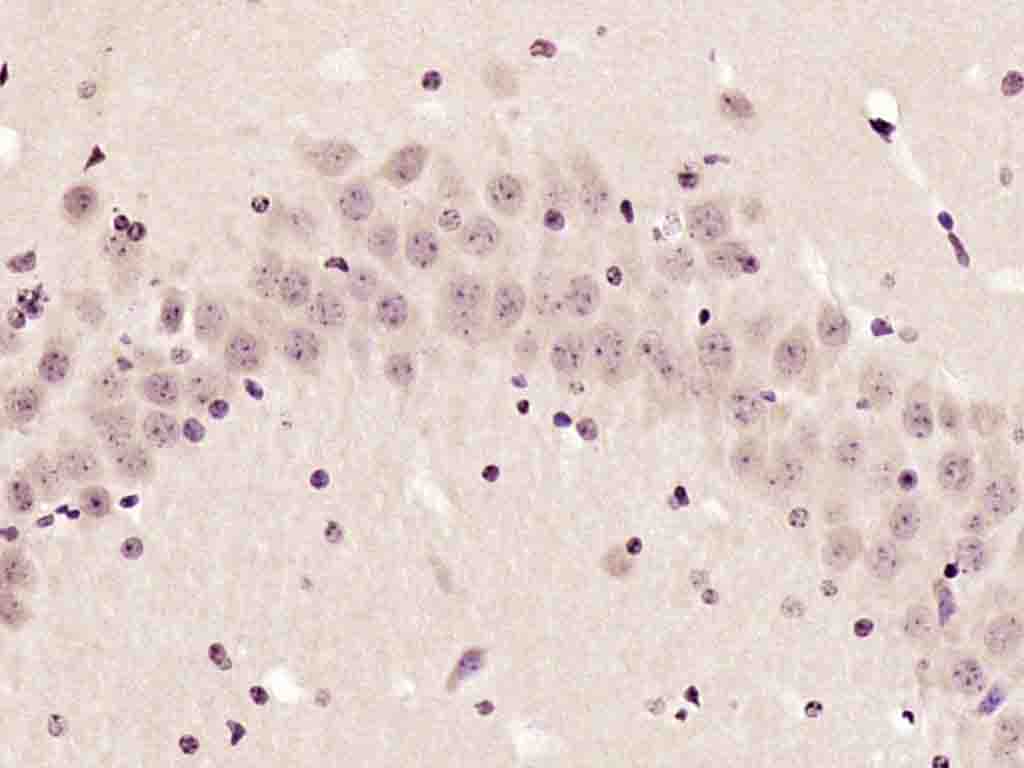
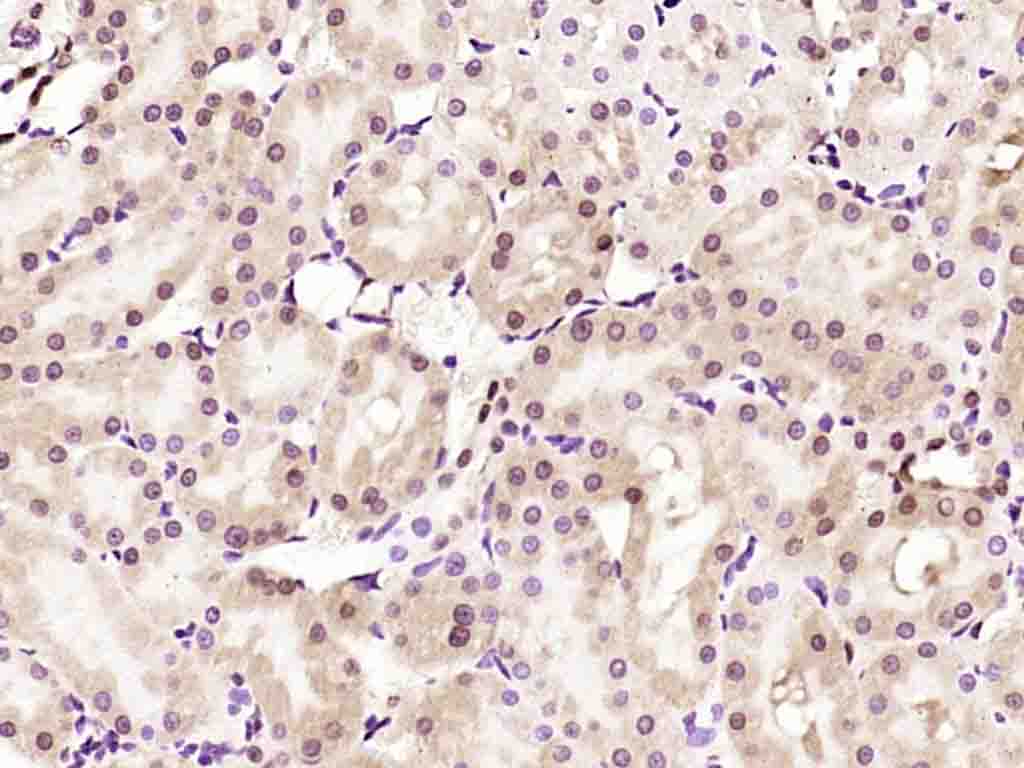
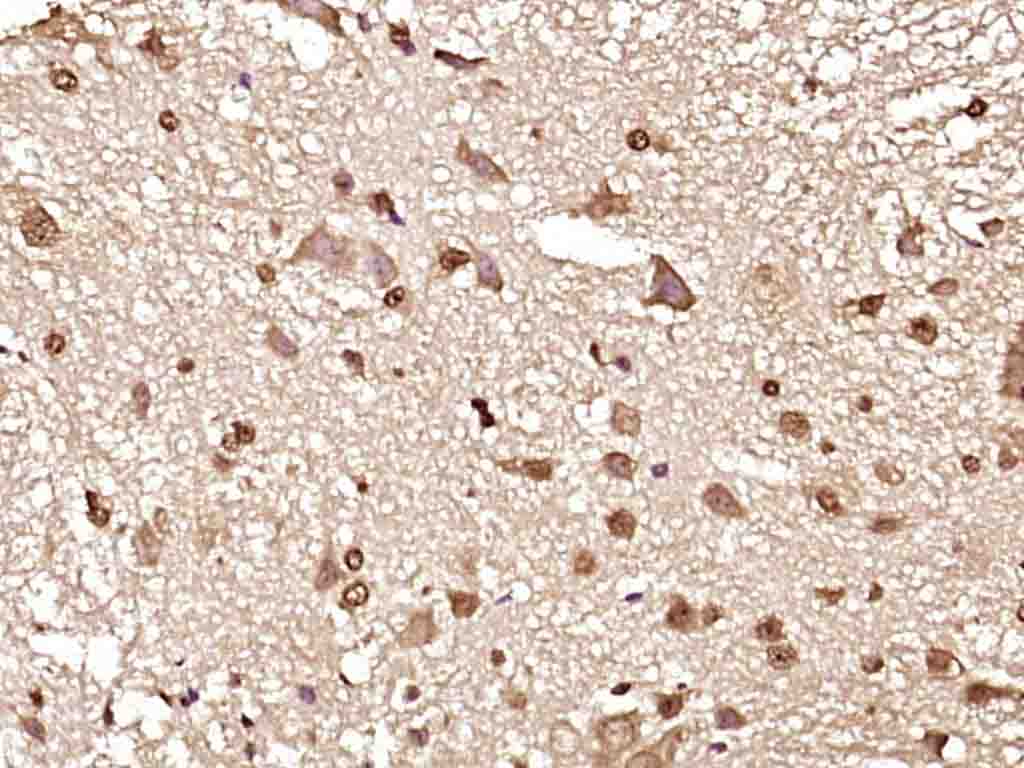


 +86 571 56623320
+86 571 56623320
 +86 18668110335
+86 18668110335

